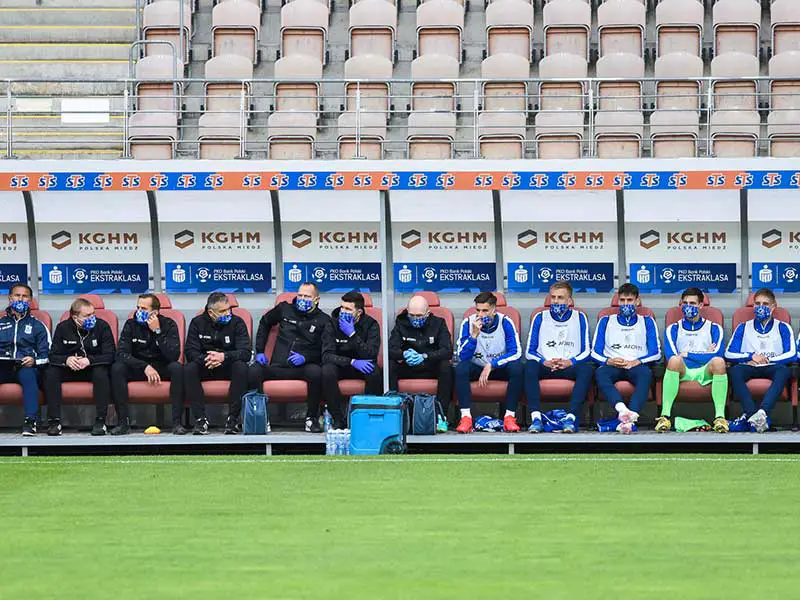What Is A Friendly Game In Soccer?
Many soccer matches have something at stake if one team wins, whether it’s points in a league, or even a trophy for a cup final. But pro and amateur soccer teams also often play friendly matches between themselves outside their regular competitive schedule. This article explains what these games are and their purposes.
Friendly soccer games are ones arranged informally between two teams, outside of either team’s regular competitive schedule, where the usual league points for a win or draw are not dependent on the result, nor does it determine whether a team progresses to the next round of a knockout tournament.
They are often used to allow teams to try out a variety of tactics, and to acclimatize new players to what will be expected of them by their teammates and coaches.
When Are Soccer Friendlies Most Often Played?
They can serve several purposes, but mainly they are played before the start of a regular soccer season in most countries, to give players who have just returned from vacation the chance to build up their ‘match fitness’. That is, so that they can be sure of being able to perform at a consistent pace for the full 90 minutes duration of a regular soccer game.
Soccer friendlies are also useful pre-season because they allow a team manager and his coaches to properly assess new players who have come into their squad during the close- or off-season. They have several positive purposes, which we detail under the headings below.
In a modern soccer season, however, there may also be a number of breaks in the calendar to allow for groups of competitive international soccer games to be played, for example, qualifying matches for a World Cup or European Championship tournament.

This will mean a team losing its star players as they go to represent their countries in these games, and to allow for this, it has become common for elite-level leagues to cancel their program of scheduled fixtures.
So in such a break, there might be the opportunity for a friendly match to be arranged. This means that the players who are not representing their countries still get the important match practice which helps them stay fit, but they might as a result get the chance to play against a team whom they might not usually play against, due them being from different leagues.
The management of a soccer team then benefits through being able to watch their substitute or younger players in a situation where nothing is at stake, but where they can show off their skills and get valuable practice, playing alongside more experience team-mates.
Another instance where soccer friendlies are often arranged is to help raise money for a player or club official who is soon to retire from the game, with the match usually called a testimonial.
In these days of soccer players being relatively so much better-paid, these are not as common as in past years, but are still sometimes staged to give fans and other players a chance to pay tribute to the player on whose behalf the game is arranged. The money raised by such friendly soccer games is usually donated to the player as part of his retirement pay-off from the club. They are most commonly staged today to raise money for a player who has been forced to retire from the game due to a serious injury, or for professional players at a lower level where their income has been much lower than those who made it into the most senior leagues.
How Can Friendly Soccer Games Help A Coach Formulate Tactics?
Soccer teams often undergo major changes to their roster of players in the close-season between competitive league and cup matches.
A manager and his coaches may have a broad idea of the tactics and formation which they want their team to play – but there is no substitute for having the chance to try out tactical variations in a non-competitive situation.
The coaching team can then assess how well suited their players are to adopting the tactics they want to use, and the players themselves can see how their role fits in with those of their team-mates.
In plenty of instances when it comes to any player refining their technique and skills, there is also no substitute for trying out moves that have been put together and learned through drills on the training ground. For example, it may become second nature to place a free kick accurately when it is being practiced by players who will be on the same team – but trying the same move out when there are opposition players who will try to anticipate what an attacking team will do will help pinpoint ways in which a rehearsed move might be more likely to result in a goal.
Soccer friendlies are also an ideal opportunity for a manager and his coaching staff to change the formation played during the course of a game, and experiment with different players in alternative positions, to assess their effectiveness. This will give the players a chance to learn how to adjust to playing in a different way to change the outcome of a game – or even, to try to preserve a lead which has already been gained.
With a typical soccer season consisting of 50 games, and often more, it also helps the coaching staff to know how effective are the players they have in all positions, so that they can have confidence in the stand-in players if they are needed to replace someone who has to miss games because of an injury. This kind of strength in depth is vital to a team which wants to be successful at most levels of the game.
This opportunity to watch different players in action applies equally to international soccer games and European friendlies between teams from different countries as it does to friendly fixtures between sides in the same country, and can often be a more attractive proposition to less committed fans because ticket prices can be reduced to reflect the non-competitive nature of the game.
It’s why teams in elite leagues such as Italy’s Serie A and the English Premier League, for example, will often arrange extensive pre-season tours to other countries, during which soccer friendlies will be played with a number of local teams.
For a club dependent on growing its fan base in order to thrive and succeed at the top level, non-competitive international soccer games and European friendlies are a chance to do this outside their own countries. This in turn brings more commercial opportunities, and a chance to increase awareness of a club’s ‘brand’ outside its own country. This revenue and awareness-raising potential is why we now see most top-level teams in the best-known leagues undertaking pre-season tours of other countries.
How Do A Soccer Team’s New Players Benefit From Playing In Friendly Matches?
The turnover of players in a soccer team can be very high, with some being transferred away, and others coming in to replace them, often at very short notice.
So, especially before the start of a season, a manager and their coaching team will appreciate the chance to put out a team in a number of soccer friendlies where there is nothing to play for, in order to experiment with tactics and formations. Do the new players who have joined the team, for example, suit playing in a 5-3-2 formation, or are their strengths better used when playing 4-3-3?
These are all questions which a manager and his assistants will benefit from finding out the answers to before the start of a competitive season.
On the other hand, a manager and his coaches may have a firm idea about the style of play they want their players to adopt, and a few European friendlies and other practice matches may represent the ideal chance for them to instil their ideas in their players, and help the players understand what their role within the system the management wishes to play will be.
We have seen a clear example of this in the English Premier League in recent seasons, where the manager of Liverpool F.C., Jurgen Klopp, has arrived from Germany with a firm idea of how he wants his team to play.
His system is called ‘gegenpresse’, or in English ‘high pressing’, and involves all his 10 outfield players pushing as high up the pitch as possible while retaining their formation. Doing this gives their opponents as little time and space as possible to settle with the ball, and to decide where to pass it to next.
But playing in this style requires players to be extremely fit, so they are far up the pitch and able to deny their opposition the chance to keep possession of the ball and create possible goal-scoring chances for themselves. Yet they also need to be able to retreat into their own half of the pitch when needed to deny their opponents the space to build their own moves and hold possession of the ball for any length of time.
So key to this tactic being able to work effectively is all 10 outfield players being able to hold their position relative to their team-mates, and so be aware of where they are in relation to them at any time.
The system has become well-known, and variants have been adopted by rival teams, its use is a great example of how a formation or a way of playing soccer is so much more effective when it has been practised in training ground drills, and on the field in friendly soccer games.
How Do Regular Team Players Benefit From Playing In Friendly Soccer Games?
Of course, overall, the more a team of players has the chance to play together, the more they understand each other, and the better they will become as a collective unit.
While each individual player will bring particular attributes to a team, the skill lies in bringing a group of such ndividuals together and helping them get the best from each other, and working together effectively as a team.
And for that purpose, playing friendly matches can be a useful exercise.
Individual players may also benefit from participating in a series of friendly fixtures, simply because playing the game is a very effective way of building up the muscles every player will make most use of when actually playing. Getting the amount of strength needed in these muscles to enable them to withstand playing a full soccer game two, perhaps even three times a week takes time and effort, and playing in a game with no competitive purpose is one way this can be done effectively and in a short space of time.

Of course, they can work on toning and increasing the power generated by individual muscles by exercising in a gym – but it’s only by playing a game that soccer players will exercise the complete group of muscles which they need to have properly toned in order to be a better player.
Consider that a player taking part in a full 90-minute soccer game might typically cover more than 10 kilometres (6.2 miles) during the match. Then, of course, they will be moving at vastly different speeds during that time, and that requires their muscles to be highly toned to avoid damage through injury, which in severe cases might become permanent.
Covering those kinds of distances will be easier for soccer players the more often they get the chance to play in a game. So if a manager and coaches are to have effective cover in all positions on the field, they will be greatly helped if the back-up players, who might be needed over the course of a long season to deputize for injured team-mates, also play full matches – and a programme of occasional friendly matches can help make up for the lower amount of game time they will get through only playing in reserve or youth leagues.
How Do Soccer Friendly Games Benefit Fans?
Finally, of course, having a friendly fixture can also give a soccer team’s fans another chance to see their idols playing.
With nothing at stake, it might be a chance also for new fans to take the chance to watch a game, when ordinarily, the cost of match-day tickets might be so high as to prevent them from doing so.
So a friendly fixture is often seen as a positive way of keeping a soccer team in touch with its local community, as it may attract new or casual fans who have either only been to a few games before, or who may not have attended a full competitive match at all.
If they like the style of play of ‘their’ team, and get a chance to see some of their best players, they are far more likely to want to go back and watch the team in more competitive games.

So friendly soccer games are a valuable way of reinforcing a club’s relationship with its local community, and if a team plays European friendlies against teams from a different country’s league, it is all the more attractive, as it is a chance to compare the relative strengths and weaknesses of the different leagues, and the variations in tactics they might use.
So friendly matches have become integral to most soccer teams’ schedules, and while the benefits mentioned above might not be instantly tangible, they are an accepted part of a team playing together more cohesively, and so becoming more effective as a unit.
